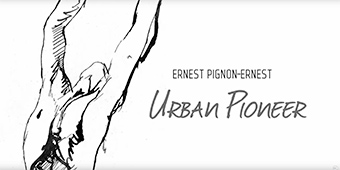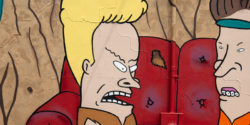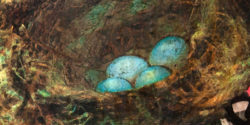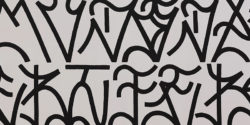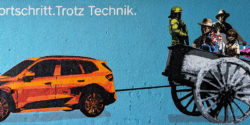
This week BSA is in Mexico City in collaboration with Urban Nation Museum of Urban Contemporary Art (UN) to see what is steering the scene on the street, meet artists, visit artist compounds, museums, galleries, and studios – and of course to capture the wild and dynamic Street Art and graffiti scene here. Where Mexico City goes in art and culture makes big waves elsewhere in Latin America, and its Street Art scene has been quickly evolving in the last decade. Join us as we investigate the character and players in this modern/traditional city of more than 21 million people.
Saner has been a significant Mexican mural painter for the last decade, is invited to festivals regularly, works with some respected galleries, has partnered with some top brands, and has work in private collections and museums including Museo de las Americas in Denver and the newly opened Urban Nation museum in Berlin. A graffiti writer here during the explosive 1990s scene on the streets and trained as a graphic designer, his identity as a Mexican painter became more important to him as he grew older and began to be less concerned with emulating European or American visual and cultural language.

Saner. Detail. Work in progress. (photo © Jaime Rojo)
That was when his personal voice emerged and he began synthesizing traditional symbols, colors, clothing, and (particularly) masks into the study of humans and our universal truths. His version of “primitive” is not so primitive, simplicity not so simple, upon closer observation, rather there are darker stirrings of profound truths about our nature. The masks and surreal scenes have multiple meanings, the characters and situations drawn from archetypes of history, his own taste in popular culture, and his critique of current events.
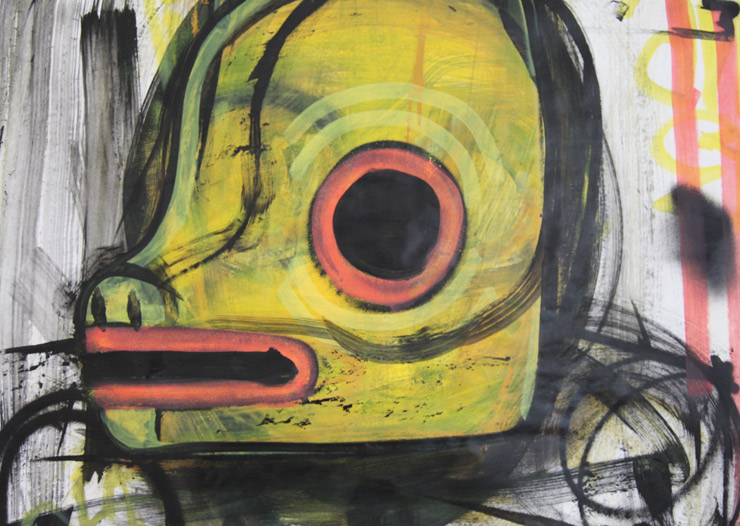
Saner. Detail. Work in progress. (photo © Jaime Rojo)
We visited Saner at his private home in a neighborhood not far from Frida Kahlo and Diego Rivera’s colonia, a significant point in the personal story because of our association with their powerful voices, pride in Mexican traditions and history, and their individual desires for their work to have an impact on the lives of others. While Kobén, his beige (or golden) retriever paces around the living room with various chew toys and pushes them into our hands as an entreaty for play, Saner sits relaxed in loose chinos and a Café Tecuva t-shirt, chatting amiably while slouched in a hand woven reed chair.
He published a children’s book last year named after the dog about a boy facing his fears so you know that Kobén is part of our every conversation – barking and running and chewing on toys while we talk about stuff like the new mural scene internationally, the troubles with corruption and political parties, drug related crime and the disappearance of 43 students in Ayotzinapa, his personal art projects with local kids, helping the community after the last months earthquake here, and his recent wedding to his beloved Lalix a term of endearment he and other use to call his wife Lizbeth.
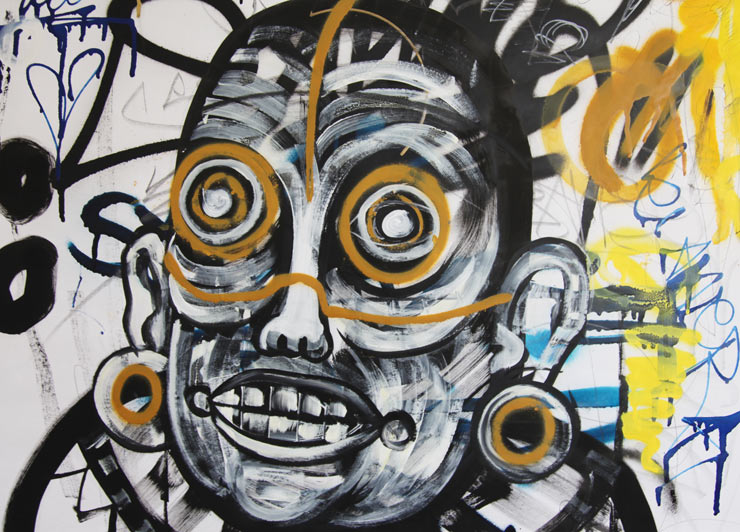
Saner. Detail. Work in progress. (photo © Jaime Rojo)
The oversized spiritual recreations of the bride and groom sit in left and right corners of their dining room listening quietly to us. Saner and Lalix had worn them as they danced into the party this April in nearby Cuernavaca; modern and folkloric, peaceful and booming with promise.
He is so excited to tell the story of the wedding that he runs upstairs for a DVD and shows us footage from the ceremony and celebrations where we can see the two of them dancing together – many times he appears near tears, full of joy. So many of the stories we hear all tie back to this seamless integration of an artist, his life, his aspirations, his beliefs, philosophies, and evolving awareness.
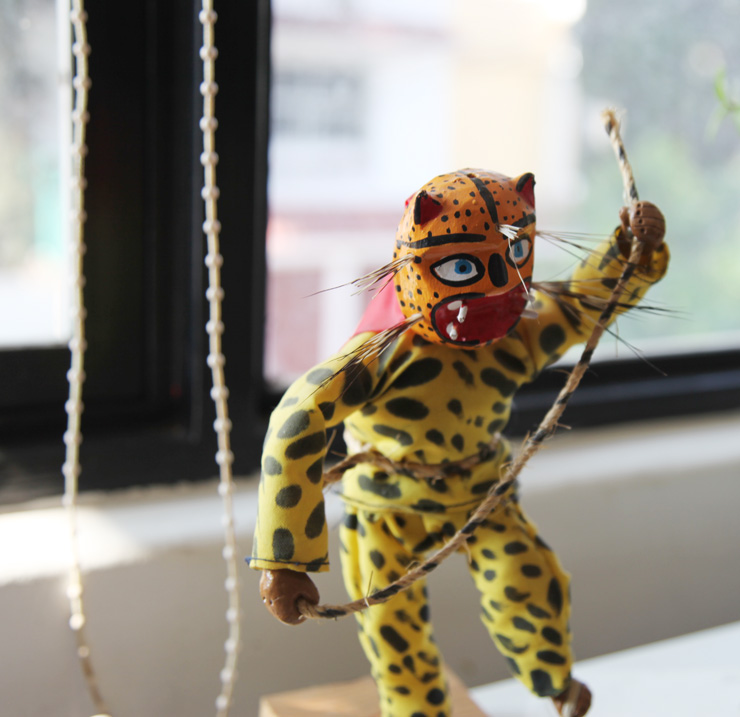
Saner (photo © Jaime Rojo)
Later when we climb the stairs to see his studio, the small and bright space carries a similar optimism, despite the range of emotion expressed on the wall of masks and the characters in his multiple sketchbooks and the papers/canvasses stacked neatly or fanned out before us. Our conversation ranges again and settle for awhile on his experiences as world-travelling mural painter and his realization that his work needs to be in dialogue with the people and the neighborhood he is visiting.
Saner recounts a turning point a few years ago when painting an impromptu mural, just to pass the time in collaboration with local celebrated graffiti/Street Artist Smithe and other writers here in la ciudad. He says the content of their mural was meant to be violent and provocative and a commentary on the topical political events and warring drug factions in the country.
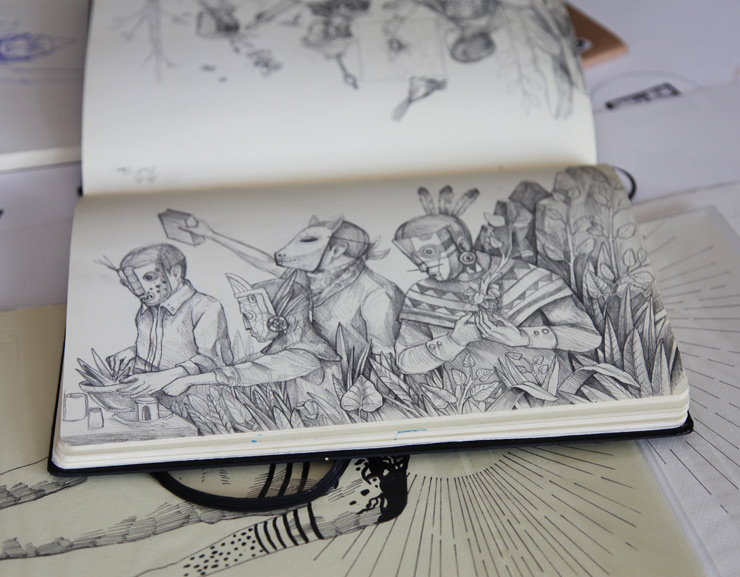
Saner (photo © Jaime Rojo)
The final product was an unexpected one for all when a neighbor stopped by on the sidewalk and questioned the artists about their intent with the mural – and in the process she revealed that a person in that same neighborhood had been killed violently on the corner. She stressed that she had known the individual and that the mural was painful to her. He says the connection between his art and how it affects the people who live with it suddenly came into focus, and he began to re-approach his public work.
Another experience of actually being stoned by small kids in Morcocco while he was painting his masked figures on a wall also shocked him into a sort of sensitivity immediately.
“They said that their mothers didn’t like the faces because they were evil. I decided to alter some of them by making them more friendly, removing the long tongues, adding some smiles – and checking with them about the results,” he says. The inclusion of the neighborhoods’ suggestions made the mural “theirs” he says, and the discord ended with some of the folks expressing a sense of pride in the new painting.
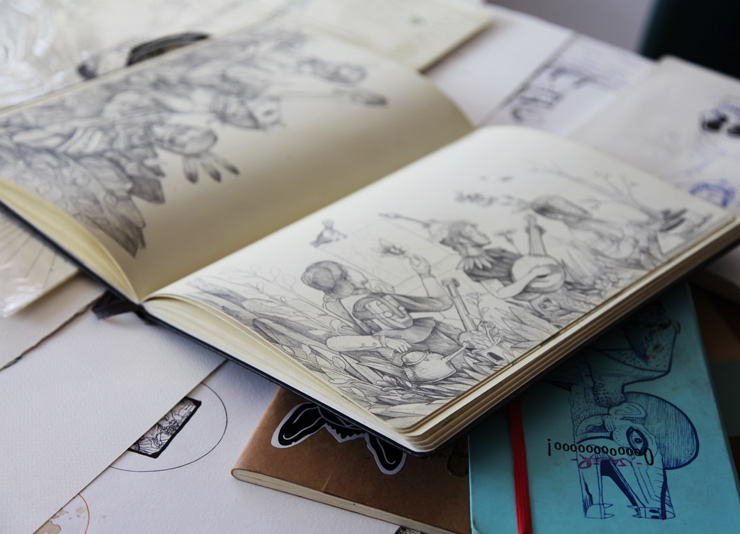
Saner (photo © Jaime Rojo)
Ironically, a few peers suggested to him that by including the feedback of the people who live there, somehow the neighbors had “won”. Maybe that perception is informed by the contentious attitude of graffiti culture which may not take the opinions of the neighborhood into account, focusing primarily on the sport of “getting up” and the admiration of peers instead.
But this is a different approach for Saner and the comment that the neighbors had “won” makes him smile. “No, no, no. It’s not like that at all. If you think of painting in terms of someone winning or someone losing, you are doing it for the wrong reasons.” He says that he originally appreciated the cross cultural nature of the mural festival experience, but today he does extensive research before he even arrives in a new city – about the people and the history. He even interviews locals when he arrives to see if he has interpreted his research correctly.
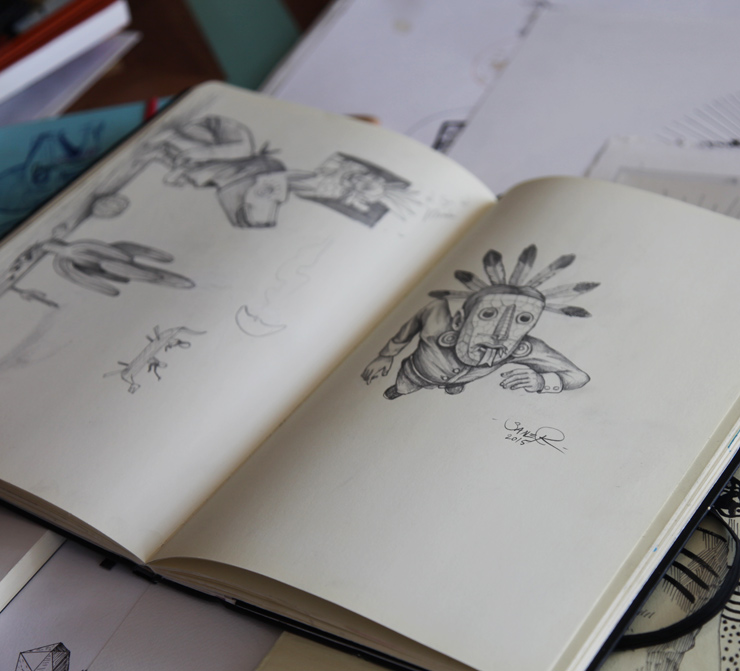
Saner (photo © Jaime Rojo)
Mexican artists, especially the muralists are inspirational for him – Rivera, Jorge González Camarena, Rufino Tamayo, the Spaniard Goya. Saner’s own mystical and grounded interpretations are modernized and contemporary, somehow timeless in a magic realism sort of way.
He also sites influences like his childhood cartoons and even the novelist Chuck Palahniuk, who wrote Fight Club and who specializes in a sort of transgressive fiction that could recall the dark surrealism evoked in some of Saner’s tableaus.
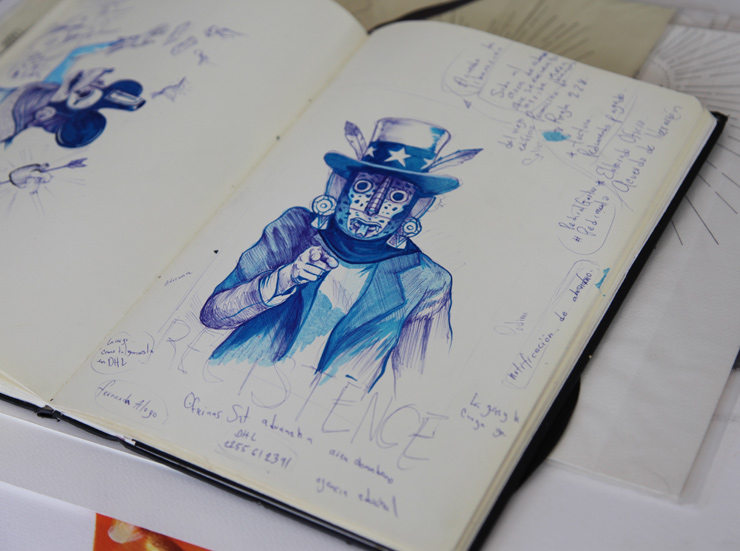
Saner (photo © Jaime Rojo)
We talk more and look at his newest sketches, experiments with colors and materials, even geometrically crisp forms. While Kobén circles us again, tail wagging and offering the occasional bark, the late winter sun through the 70’s suburban ranch windows sets the room aglow.
Saner tells us of his desire to challenge his viewers with slightly uncomfortable scenes. His process includes addressing an issue, then handing the microphone to the viewer, asking them to take ownership in the outcome.
It’s a subtle activism that many will miss in this psychological and sometimes spiritual play enacted before us; a gentle and insistent voice that tells you about the transformational power of art.
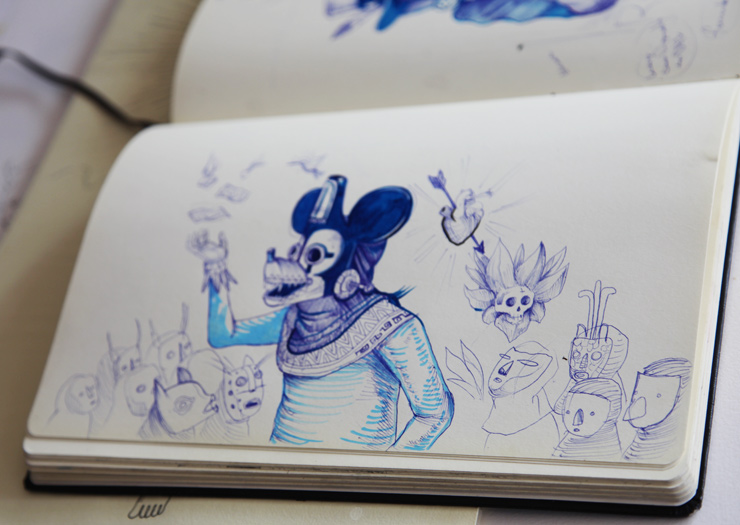
Saner (photo © Jaime Rojo)
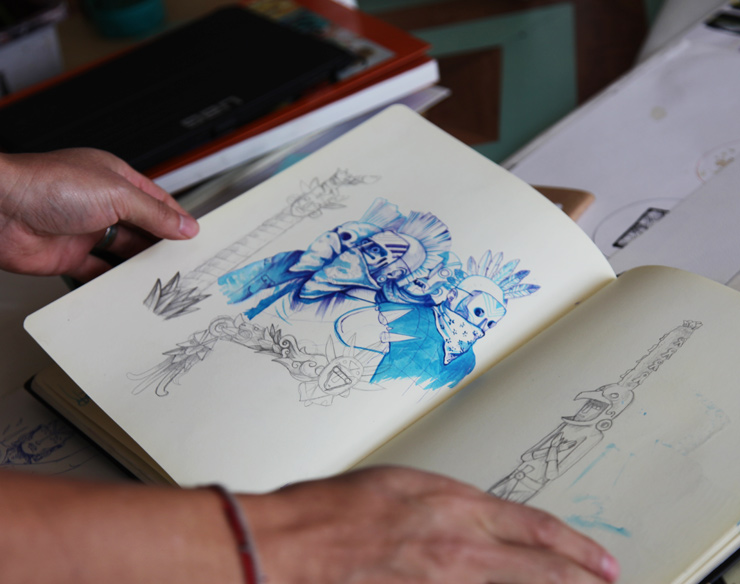
Saner (photo © Jaime Rojo)
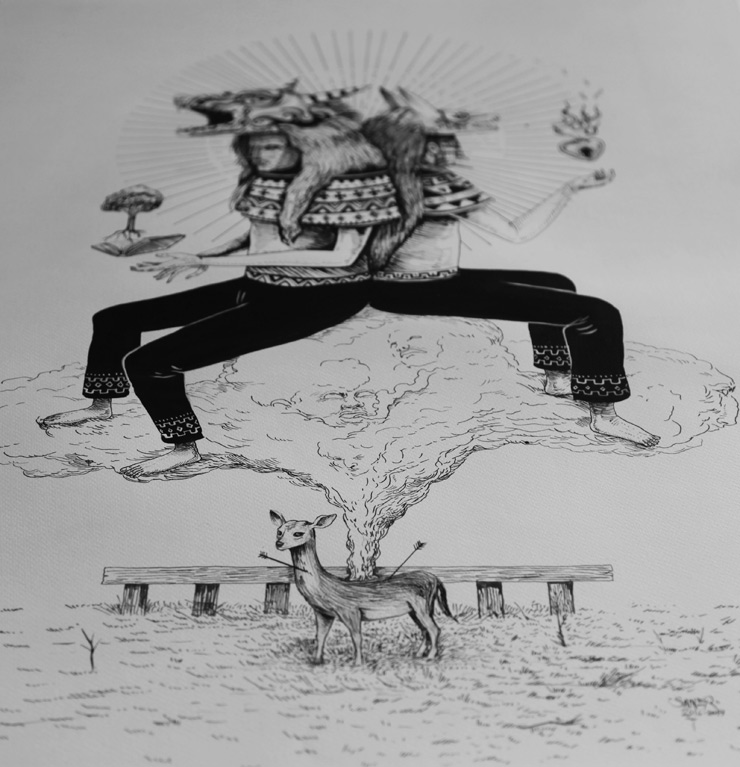
Saner (photo © Jaime Rojo)
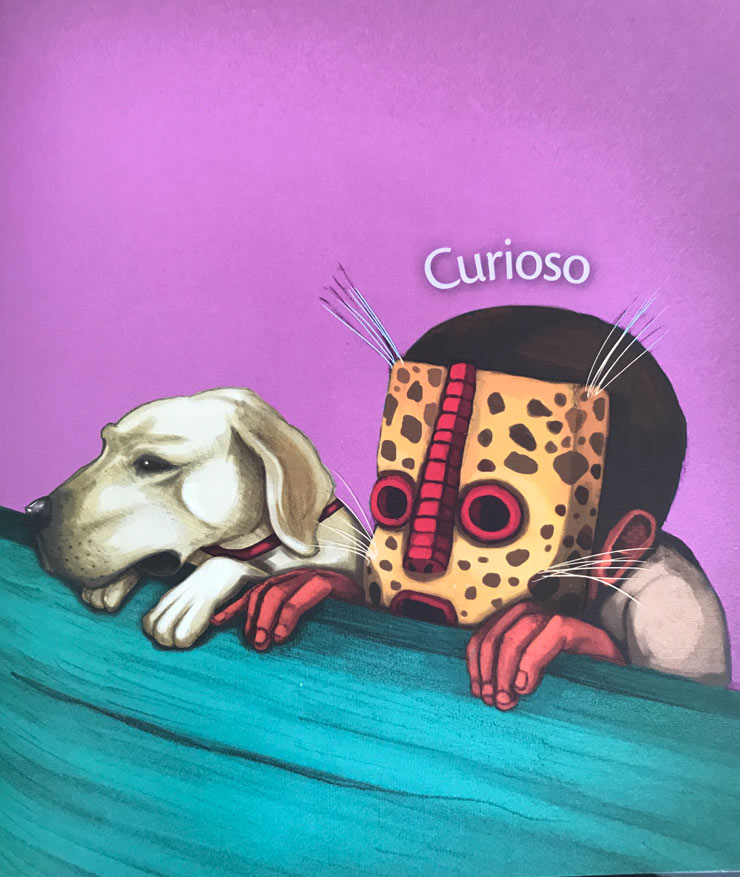
Based on real life characters. From the children’s book Kobén by Saner. (photo © Jaime Rojo)
 BROOKLYN STREET ART LOVES YOU MORE EVERY DAY
BROOKLYN STREET ART LOVES YOU MORE EVERY DAY

